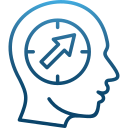Troubleshooting App-Based Practice
Tame the noise by setting specific reminder windows, muting badges, and using focus widgets instead of alerts. Batch notifications with scheduled delivery. The point is to reduce disruption, not add it, so your app becomes a refuge, not another tile demanding attention.
Troubleshooting App-Based Practice
Try walking meditation, box breathing, or shorter intervals. Some apps include movement cues and paced audio to meet higher arousal states. Progress isn’t perfect stillness; it’s noticing and redirecting with kindness. Small, frequent practices compound into real attentional strength over weeks.



